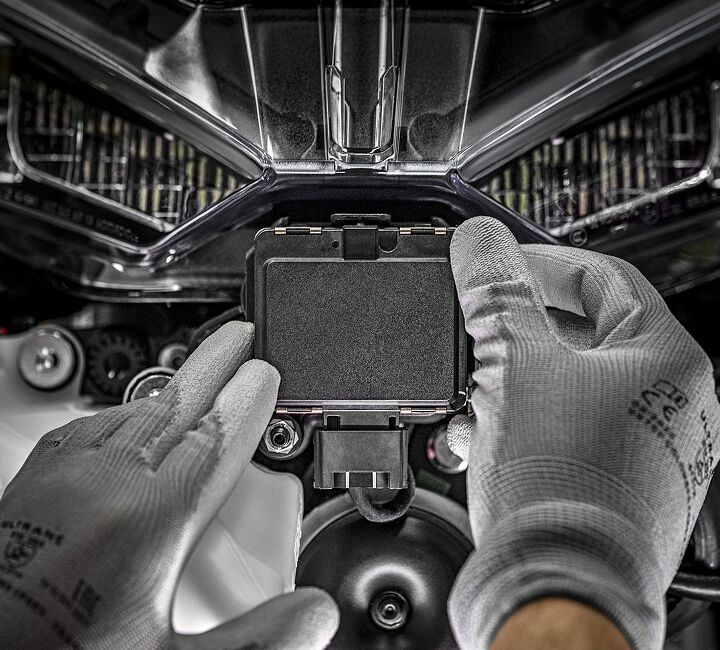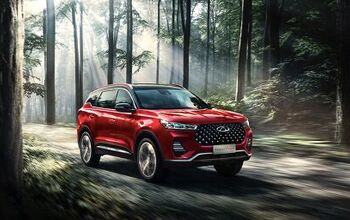Motorcycles Set to Embrace Electronic Nannies, Thanks Ducati

On Tuesday, Ducati announced it would be adding adaptive cruise control and blind-spot monitoring to the Multistrada V4 — effectively making it the first production motorcycle in the world to receive such features. While chucking front and rear-facing radar onto an automobile has become relatively common, motorbikes haven’t been getting them. Pricing remains the largest concern but many motorcycle enthusiasts have also pointed out the systems may expose riders to unnecessary risks.
If the forward-mounted radar on your car sees the vehicle in front getting closer, it may jam on the brakes to save you from an accident. On two wheels, that same action runs the risk of tossing a rider over the handlebars before promptly running themselves over. This leaves us wondering as to the true usefulness of these systems migrating to motorcycles. Have we gone mad with electronic nannies or is all this progress worth it to keep us safe?
Despite riders never demanding anything more advanced than what currently existed, the industry entered itself into an arms race. In June, BMW even said it was finally on the cusp of installing adaptive cruise control (developed in collaboration with Bosch) into its touring motorcycles. But Ducati seems to have beaten them to the punch with the Multistrada (also with a little help from Bosch).
Ducati has been cagey with the details but, like BMW, said the system it’s using would be more progressive than those found in automobiles. That presumably limits its effectiveness in emergency situations while helping avoid tossing occupants to the pavement at 70 mph. Throttling up has also been made more gentle to help riders keep pace with traffic without having to brace for acceleration. While we suppose that’s great news for anybody behind the bars of the new Multistrada, it’s another example of taking someone out of the game using digital assistants.
Speaking of which, the model is also going to receive blind-spot monitoring to help riders see through those giant C-pillars they don’t have.
Look, we understand manufacturers want to sell us things. But this is starting to feel satirical. Any competent rider can swivel their head to have a 360-degree view of the world around them; it’s one of the biggest benefits of traveling on two wheels. Only a fool would rely on their side mirrors before committing to a lane change, that means all blind-spot monitoring is doing is conditioning riders out of good habits and into bad ones. Why would anybody bother to check when they know the bike is supposed to be checking for them?
While this is a massive leap forward in tech for motorcycles, it’s probably an unnecessary one. This website has constantly chided automakers for installing wonky driving aids that don’t quite live up to the hype. Now they’re going to be on motorcycles where riders have to perpetually manage weight transfer while remaining attentive to their surroundings. The only possible advantage we see to this is giving new riders an enhanced (albeit false) sense of safety.
The motorcycle industry has been losing customers for years and is desperate to bring in new blood … and maybe this will help. But the real problem seems to relate more to shifting trends, namely our current preoccupation with safety at all costs, and a general lack of fun money.
Bikes are inherently less safe than the automobile and there’s no way around that. They’ve also become prohibitively expensive to new riders who’ll likely still need an automobile and have less disposable incomes than their parents. While the industry has been working on the cost of bikes by bringing in more versatile middle and lightweight models, installing electronic aids likely work directly against that.
While a follow-up on the $19,000 (estimated) Multistrada V4 seems unlikely — as this is a technically car website — your author will be combing over the details once Ducati releases them on November 4th. It’s worth knowing how this system stacks up against what’s inside modern automobiles and how honestly the brand attempts to market these features. To its credit, Ducati has already said “advanced systems are not autonomous riding systems and therefore do not replace the rider,” which is more than automakers were doing when they started introducing these systems.
[Images: Ducati]

A staunch consumer advocate tracking industry trends and regulation. Before joining TTAC, Matt spent a decade working for marketing and research firms based in NYC. Clients included several of the world’s largest automakers, global tire brands, and aftermarket part suppliers. Dissatisfied with the corporate world and resentful of having to wear suits everyday, he pivoted to writing about cars. Since then, that man has become an ardent supporter of the right-to-repair movement, been interviewed on the auto industry by national radio broadcasts, driven more rental cars than anyone ever should, participated in amateur rallying events, and received the requisite minimum training as sanctioned by the SCCA. Handy with a wrench, Matt grew up surrounded by Detroit auto workers and managed to get a pizza delivery job before he was legally eligible. He later found himself driving box trucks through Manhattan, guaranteeing future sympathy for actual truckers. He continues to conduct research pertaining to the automotive sector as an independent contractor and has since moved back to his native Michigan, closer to where the cars are born. A contrarian, Matt claims to prefer understeer — stating that front and all-wheel drive vehicles cater best to his driving style.
More by Matt Posky
Latest Car Reviews
Read moreLatest Product Reviews
Read moreRecent Comments
- Zerofoo 5-valve 1.8T - and OK engine if you aren't in a hurry. These turbocharged engines had lots of lag - and the automatic transmission didn't help.Count on putting a timing belt on this immediately. The timing belt service interval, officially, was 100,000 miles and many didn't make it to that.
- Daniel J 19 inch wheels on an Elantra? Jeebus. I have 19s on my Mazda 6 and honestly wish they were 18s. I mean, I just picked up 4 tires at over 1000 bucks. The point of an Elantra is for it to be cheap. Put some 17s on it.
- ToolGuy 9 miles a day for 20 years. You didn't drive it, why should I? 😉
- Brian Uchida Laguna Seca, corkscrew, (drying track off in rental car prior to Superbike test session), at speed - turn 9 big Willow Springs racing a motorcycle,- at greater speed (but riding shotgun) - The Carrousel at Sears Point in a 1981 PA9 Osella 2 litre FIA racer with Eddie Lawson at the wheel! (apologies for not being brief!)
- Mister It wasn't helped any by the horrible fuel economy for what it was... something like 22mpg city, iirc.



































Comments
Join the conversation
With Ducati's announcement, it will only be a matter of time before Consumer Reports announces to its army of subscribers it will no longer recommend any motorcycle without its preferred electronic nannies standard. CR made the same move with automobiles last year and it has resulted in reviews where cars with high road test scores finish with final test scores some 20-30 points lower because its base trim level did not all all the latest and greatest electronic safety features, most notably with Cadillacs.
I have Honda Sense in my '17 CR-V and I love it. I suppose if I used it like many Tesla drivers insist on using autopilot, I'd hate it and be terrified of it. But instead I use it as intended. If LKAS is steering you into a semi, you aren't using it correctly, which is with your hands firmly on the wheel, and eyes attentive enough to notice you are leaving your lane entirely. If the car's pulling you out of your lane, it's no trouble at all to stay in it (LKAS provides no more than a gentle nudge; it's not yanking the wheel out of your hands.) Though I have to say LKAS has never pulled me out of my lane; it's more likely it just loses the lane markings and turns off. I have the system set to give a gentle beep when that happens. Same thing with ACC. If the ACC is slamming on brakes for you at any point, you've done something very wrong. It's Adaptive *Cruise Control*, and Lane-Keep *Assist*. In short, the system is meant to act like ordinary cruise control, with some following-distance help. And help keep you centered in the lane, but not take over steering duties entirely. I use the systems as they are intended: to take some of the load off of long drives. The car handles the fatiguing (but simple) minute up-close tasks, like lane-keeping and following distance, while I can concentrate on what I'm much better at than the computer: spotting hazards far down the road. The computer can handle the moron that keeps texting without cruise on and can't maintain a constant speed to save their life. Me? I'm looking for that sudden stop in traffic a half-mile down the interstate so I can start slowing down well in advance to prevent surprising the inattentive moron behind me. Or the overloaded 18-wheeler just cranking down the entrance ramp that's going to force a couple other cars into my lane. Or the flashing lights on the shoulder I need to move out of. Or spotting potholes. You get the idea. If this motorcycle's ACC launches you over the handlebars, you were doing something *very* wrong.